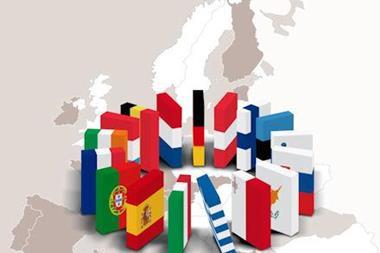At a time of heightened global turmoil, we asked Europe’s leading risk managers what they think will most affect their businesses
F rom the protests in the Middle EAST to the rise of cyber crime and the continuing trials and tribulations of Western economies, these are nothing if not interesting times. StrategicRISK, in association with Marsh Risk Consulting, has released a report analysing European companies’ risks in five categories: economic, environmental, geopolitical, societal and technological.
The report summarises the comments of 30 leading risk management professionals in European companies. While their views varied somewhat, reflecting different sectoral concerns, the single issue that all voiced was the interconnectivity of risk and its unpredictability.
One example of this is last year’s ash cloud resulting from the Icelandic volcano eruption. Even companies that did not have suppliers in Iceland, and perhaps felt they had little or no exposure to natural catastrophes, did suffer disruption in deliveries. As one risk manager said: “There seems to be an increase in one risk triggering another – and that’s a risk in itself.”
Another risk manager foresaw problems arising from the Australian floods. His firm has no direct suppliers in Australia, but the country does supply raw materials to some of its producers and the floods may well affect the availability of these.
Interconnectivity is probably most apparent in the economic risk category. The ‘butterfly effect’ – that is, a small change in one place in a complex system that can have large effects elsewhere – has never been more apparent than in today’s globalised system. The financial markets are particularly interdependent.
A question of timing
Research for this report was undertaken in the first three months of 2011. It was a period when unforeseen political turmoil in some countries was at the forefront of everyone’s minds so, not surprisingly, geopolitical risks shared first place with economic risks in European companies’ concerns.
However, if comment had been sought six months earlier, it seems likely that the recession would have headed the list.
Similarly, research was just coming to a close when the Japanese earthquake and tsunami struck. Would risk managers have rated the impact of natural catastrophes higher in the risk league if the research had been concluded a month later?
It is natural for commentators to react more strongly to the issues of the moment. With this in mind, it is interesting to see that terrorism and pandemics were not among the top five risks – although governments and health organisations would probably rate them higher.
It is clear that companies need to address the effects rather than the unpredictable and often uncontrollable causes of risk. For example, risk management of supply chain disruption– a major risk for most firms – needs to be robust, whatever causes the disruption. Companies need to be able to repatriate employees quickly and safely, regardless of where problems arise.
How has today’s risk environment affected the role of risk managers? Some of our commentators volunteered views. “The good news for risk management is that its relative importance in the eyes of the board has increased,” was one comment.
Another respondent stressed that risk managers cannot afford to operate in silos. “We have to help our business managers think more about what the knock-on effect might be of their decisions, how things may happen in conjunction with other risks the company may be running, and the ultimate major impact that might result – without getting in the way of the company’s ability to do business.”
Downloads
Risk Report
PDF, Size 0.1 mb



















